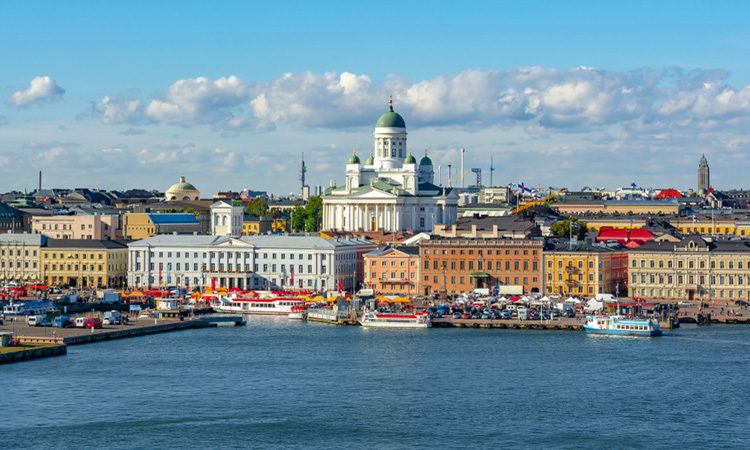MaaS, EVs and AVs: how Helsinki became a transport trendsetter
- Like
- Digg
- Del
- Tumblr
- VKontakte
- Buffer
- Love This
- Odnoklassniki
- Meneame
- Blogger
- Amazon
- Yahoo Mail
- Gmail
- AOL
- Newsvine
- HackerNews
- Evernote
- MySpace
- Mail.ru
- Viadeo
- Line
- Comments
- Yummly
- SMS
- Viber
- Telegram
- Subscribe
- Skype
- Facebook Messenger
- Kakao
- LiveJournal
- Yammer
- Edgar
- Fintel
- Mix
- Instapaper
- Copy Link
Posted: 21 August 2019 | Reetta Putkonen, Ulla Tikkanen | No comments yet
As cities look to reduce their carbon footprint and increase ease of use for passengers through service integration, Helsinki has become a mobility leader. Reetta Putkonen, Director of Traffic and Street Planning, City of Helsinki, and Ulla Tikkanen, Technical Project Manager, Smart Mobility Systems and Autonomous Driving, Forum Virium Helsinki, tell us how Helsinki is planning for the future.


What is the mobility situation like in Helsinki at the moment and how is your work supporting it?
Reetta: I’m the head of Helsinki’s traffic and street planning office, so all the transportation planning services are under my watch. There are around 100 people in my office that focus solely on traffic and street planning, enabling parking places where we want passengers to be able to switch between modes of mobility.
Ulla: I work for Forum Virium Helsinki, an innovation company owned by the city of Helsinki, focusing on innovation projects, open data and smart mobility. I work on the FABULOS project, which is leading a development programme with six other European partner cities to develop solutions for automated vehicles, focusing on bus services as part of public transport. In terms of the regulation and legislation required, we are working closely with the different city units, the traffic safety agency and other public entities. In Finland, regulators are agile, so it is easy to work closely with them.
It’s obviously helpful to have policymakers willing to enable innovative change; are there any other examples of this in Finland?
Reetta: Our legislation has recently changed to be much more tolerant of new data requirements. If your business is related to MaaS or you own a bus company, you need to open your data in terms of certain interfaces – that is the new law. There is also a law that has helped to open and streamline all the different payment interfaces. If I buy a ticket from a company for a bus journey, my ticket can and will be integrated into other services too.
That open approach is very important to making sure that every type of transport service is interoperable and much better connected, and Helsinki seems to be a trendsetter for change. Do you have any knowledge sharing agreements with other cities or other countries?
Reetta: We are doing quite a lot to connect countries and their capitals, especially in the Nordic region; the FABULOS project, is an example of this. There are six different cities in Europe that are participating in the project; Tallinn (EE), Helsinki (FI), Helmond (NL), Porto (PT), Gjesdal (NO), and Lamia (GR). To be successful in a project like this, you need to share information between all of the cities.
We are also part of an EV network that shares information about electric vehicles and what they will need to be like in the future, compared to how they currently fit within the network and the infrastructure we have. We are sharing this information with over 100 other electric vehicle-friendly cities.
Is there a goal in place for Helsinki to become carbon neutral within a certain timeframe?
Reetta: As with most cities, absolutely there is. The strategy we’re working to was approved by our council in 2017 and we’re aiming to be carbon neutral by 2035. There is a huge plan in place concerning how we are going to achieve that, consisting of more than 140 actions. Having a tangible list like that demonstrates the huge effort that’s going into becoming carbon neutral rather than just saying that we will be.
From a public transport perspective, there will of course be electric modes of transport to meet carbon neutral goals. However, for those still determined to own their own car is there any incentive to upgrade to an electric vehicle, for example a financial grant?
Reetta: Not yet unfortunately – our government hasn’t announced assistance for those investing in EV technology. What we can do instead is create more charging points. We have noticed that most EVs will be charged over night, but there’s a clear need to have better public access to fast-charging points to encourage the public use of electric vehicles. In the summer of 2020, we have plans for 20 charging points to be built by market orientated companies. We are not going to be paying them; instead we will give them the space to install the chargers.
With EVs there isn’t much that cities can do, it’s more about governments and the need for a national approach to economically support electric vehicles. If we want to be carbon neutral, we need massive private investment to shift to EV and, currently, I don’t know if that will happen.
Would you say there needs to be a more joined-up approach to implementing these changes, not just in Helsinki but worldwide?
Reetta: The help offered by national governments to help cities in achieving their goals is too disparate at the moment. If this doesn’t change, then the transport revolution we all discuss at length cannot happen. This is especially true with EVs; they will not be able to penetrate the market to the necessary extent without the support of national government. Also investing the rail network is important.
While pollution and congestion are somewhat tied together at the moment, taking a petrol or diesel car off the road and replacing it with an electric car won’t solve congestion. What are your thoughts on this?
Reetta: While emissions are a huge concern, we also need to consider the space that vehicles occupy. Densely populated cities need mobility options that use space as efficiently as possible.
Ulla: Helsinki is very much in the autonomous bus and autonomous mobility sphere, and these are technologies that could help. Currently, we have two routes that are part of public transportation – just some of the pilot trials we’ve run. We are trying to gain user acceptance and create a great user experience with the automated shuttles because they take up as much space as a car but up to 10 people can use it at once.
Do you think there is a mindset change that needs to happen among the public to make shared mobility solutions more accepted?
Reetta: I think that has already happened in Helsinki; our city bikes are very popular and are used regularly. We have had nearly three summers of use, during which a bike is used an average of eight times a day. It shows that our citizens are ready for sharing and are relinquishing the burdens of ownership. I think the car will be the toughest mode of transit to convince people to give up owning. Parking becomes the main issue which gives more credence to the anti-car mentality. In very dense areas, the issues that are associated with parking can be eliminated by sharing vehicles, available only when needed.
Ulla: Helsinki obviously has the MaaS solution, Whim, which has enabled great multimodality. It has incorporated the city’s shared bikes with its public transport and then car rental and taxis too. It is a very well-used and popular system.


To find out more, click here!
Helsinki is the envy of a number of cities, having adopted MaaS successfully. As a user, what has the experience been like in having access to all those services in one place?
Reetta: I think there is still a lot of work to do to ensure that the level of service equates to the level of service experienced in private car ownership. To drive this, there needs to be strong competition between MaaS companies.
It is also vital that there is a core public transport system so that MaaS can be built on top of the existing infrastructure. If public transport is separate from MaaS, the system cannot work effectively. Helsinki City Transport (HSL) has opened ticketing interfaces so that MaaS providers can introduce their own products alongside the normal transportation system.
On the other hand, we need to ensure that we are not negatively disrupting the market, which needs to evolve on its own rather than have a third party interrupting with services that aren’t really market orientated. Helsinki subsidises 50 per cent of public transport infrastructure, so income to HSL comes through a 50/50 split between ticket sales and tax from cities that are part of the HSL scheme. Another concern is that MaaS could push modal split in the wrong direction, increasing private car use. MaaS services should decrease the number of households that have cars.
Do you feel like you are ahead of the game in Helsinki when it comes to public transport and the use of MaaS?
Ulla: We are doing our best to pilot schemes and ideas to identify what works for us. We have some drone projects too that show the city in a different light, giving another layer of understanding to what we have to work with. It’s important to try to get projects to target the needs of the city so we can ensure that what we implement will work within the spaces that are available.
Reetta: We are now facing the challenge of rapid growth within our city; there are nearly 8,000 more people now than in 2017, and we are building more housing to accommodate this – 5,000 new apartments every year to keep up with the growth. When we focus on this growth in the right way, businesses like those in the transport sector will also benefit from the increase.
What do you think of the pace of change we’re seeing at the moment, and the potential for it to speed up?
Ulla: It is a slow process, but I think that the size of Helsinki is a massive advantage to us. It is a small city which makes our progress easier to document. There is also a well-functioning interaction between the public and the private sectors. Furthermore, the authorities have an open mindset which enables the development and progression of the sector.
What is the one primary factor driving all this change in Helsinki?
Ulla: The work we’re doing is for the citizens. We want the city to be the best version of the city it can be – making it more liveable and more accessible to everyone. People come to cities to live and find work, but they only stay if they are happy, and I think that is a vital motivation behind our work.
Related topics
Mobility Services, On-Demand Transport, Passenger Experience, Public Transport, Sustainable Urban Transport
Related cities
Helsinki
Related organisations
City of Helsinki








